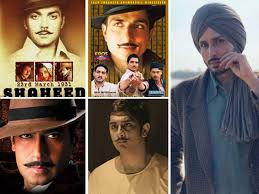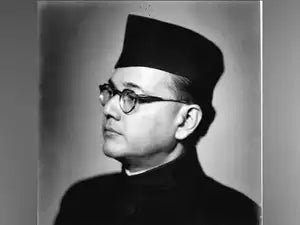
SHAHEED DIWAS: REMEMBERING THE MARTYRS OF INDIA’S FREEDOM STRUGGLE
The Story of Bhagat Singh, Sukhdev, and Rajguru: Icons of Indian Independence
Every year on March 23rd, India observes Shaheed Diwas, or Martyrs’ Day, to honor the three young revolutionaries who laid down their lives for the nation’s independence. Bhagat Singh, Sukhdev Thapar, and Shivaram Rajguru were executed by the British government on this day in 1931 for their role in the assassination of a British police officer in Lahore. Their unwavering courage, patriotism, and ultimate sacrifice inspired countless Indians to join the freedom movement against colonial oppression.

Bhagat Singh: A Revolutionary from Birth
Bhagat Singh was born on September 28, 1907, into a Sikh family in Punjab. He was profoundly influenced by his family's involvement in the Gadar movement and the revolutionary activities of figures like Kartar Singh Sarabha and Rash Behari Bose. Bhagat Singh joined the Naujawan Bharat Sabha, a youth organization founded by Lala Lajpat Rai, and later became a key member of the Hindustan Socialist Republican Association (HSRA), a radical group dedicated to overthrowing British rule through armed struggle.
Sukhdev Thapar: The Dedicated Activist
Sukhdev Thapar was born on May 15, 1907, in Ludhiana, Punjab. As a student at the National College in Lahore, he met Bhagat Singh and Yashpal, which solidified his commitment to the freedom movement. Sukhdev was an active member of both the Naujawan Bharat Sabha and the HSRA, participating in numerous revolutionary activities, including distributing pamphlets, organizing meetings, and collecting funds.
Shivaram Rajguru: The Skilled Marksman
Shivaram Rajguru was born on August 24, 1908, in Khed, Maharashtra. A devout Hindu and follower of the Arya Samaj, Rajguru was also a skilled marksman. He joined the HSRA to fight against British rule and became a close associate of Bhagat Singh and Sukhdev, taking part in several key revolutionary actions.
The Assassination of John Saunders
The trio is best known for their bold attack on British police officer John Saunders on December 17, 1928. This act was in retaliation for the death of Lala Lajpat Rai, who had been injured during a lathi charge ordered by another officer, James Scott. Bhagat Singh and Rajguru shot Saunders, while Sukhdev and Chandrashekhar Azad provided cover. The group then escaped and went into hiding.

The Bombing of the Central Legislative Assembly
On April 8, 1929, Bhagat Singh and fellow HSRA member Batukeshwar Dutt threw bombs and leaflets inside the Central Legislative Assembly in Delhi to protest against repressive British laws. Their intention was not to harm but to "make the deaf hear." After the bombing, they surrendered and were arrested, along with other HSRA members.
The Lahore Conspiracy Case
The trial, known as the Lahore Conspiracy Case, lasted two years. During this period, Bhagat Singh, Sukhdev, and Rajguru, along with other prisoners, went on a hunger strike demanding better treatment and equal rights for Indian political prisoners. They used the court as a platform to propagate their revolutionary ideology and expose the injustices of British rule.
Execution and Legacy
Despite widespread public support and appeals for clemency, the British government decided to execute the three revolutionaries. Bhagat Singh, Sukhdev, and Rajguru were hanged in Lahore Jail on March 23, 1931, at 7:30 pm, ahead of the scheduled time. Their bodies were secretly cremated by the jail authorities on the banks of the Ravi River. GET BHAGAT SINGH T-SHIRTS HERE!
The sacrifices of Bhagat Singh, Sukhdev, and Rajguru have left an indelible mark on India's struggle for independence. Their stories continue to inspire generations to join the Indian Army and other forms of national service, carrying forward the legacy of freedom fighters who gave everything for their country.
[The images used in this blog post are not owned by Anime Devta, they are just for entertainment purposes]
| SUKHDEV | BHAGAT SINGH | FREEDOM FIGHTERS | INDIAN ARMY | RAJGURU | SHAHEED DIWAS | FREEDOM MOVEMENT |
~Mimansa Sharma

